If you’re looking for cheap raised beds, I’ve rounded up the best ideas around. Gardening doesn’t have to be an expensive hobby. With a bit of creativity and resourcefulness, you can create beautiful raised beds without breaking the bank.
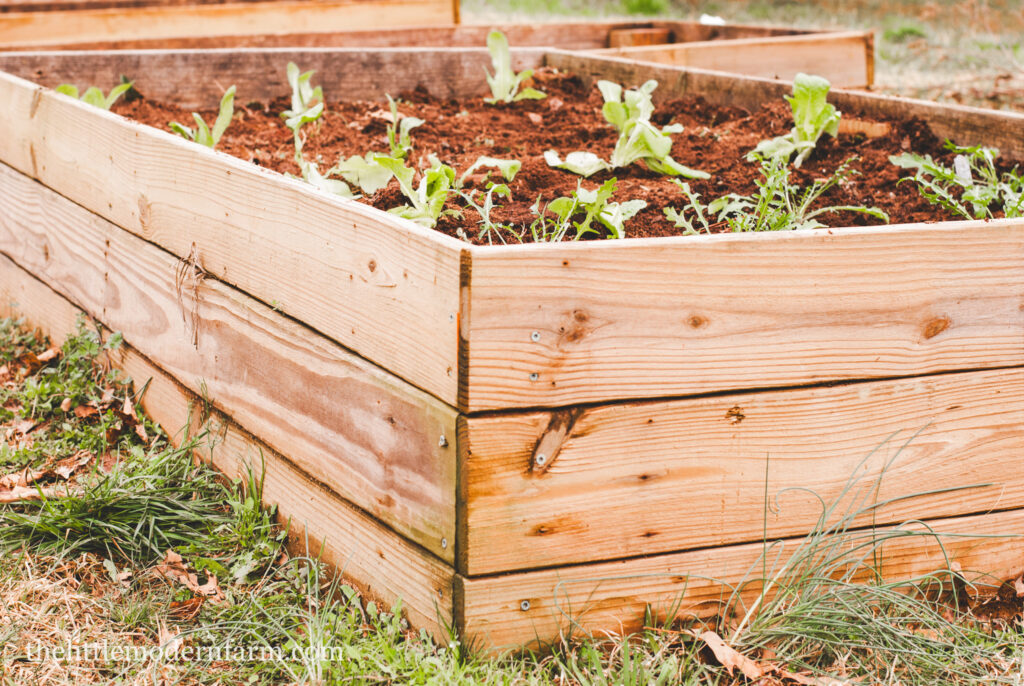
One of the best ways to achieve cheap raised beds is by using recycled and natural materials found around your home. In this post, I’ll explore some budget-friendly raised bed options that will have you growing your own vegetables and flowers in no time.
Check out my post on how to plan a garden for more on gardening. Also, check out my free garden planner!
Wooden Pallets
Wooden pallets are versatile and easy to repurpose into cheap raised beds. They can often be found for free at local manufacturing plants. You can easily stack the pallets on top of each other, secure them with screws or nails, and fill them with soil. You can also break them down and use the individual planks to construct custom-sized beds.
Make sure the pallets aren’t treated with any chemicals. You should see a stamp on the pallet that marks the treatment used. A pallet marked “HT” means it was heat-treated and is safe to use. A pallet marked “MB” was treated with chemicals and shouldn’t be used in gardening.
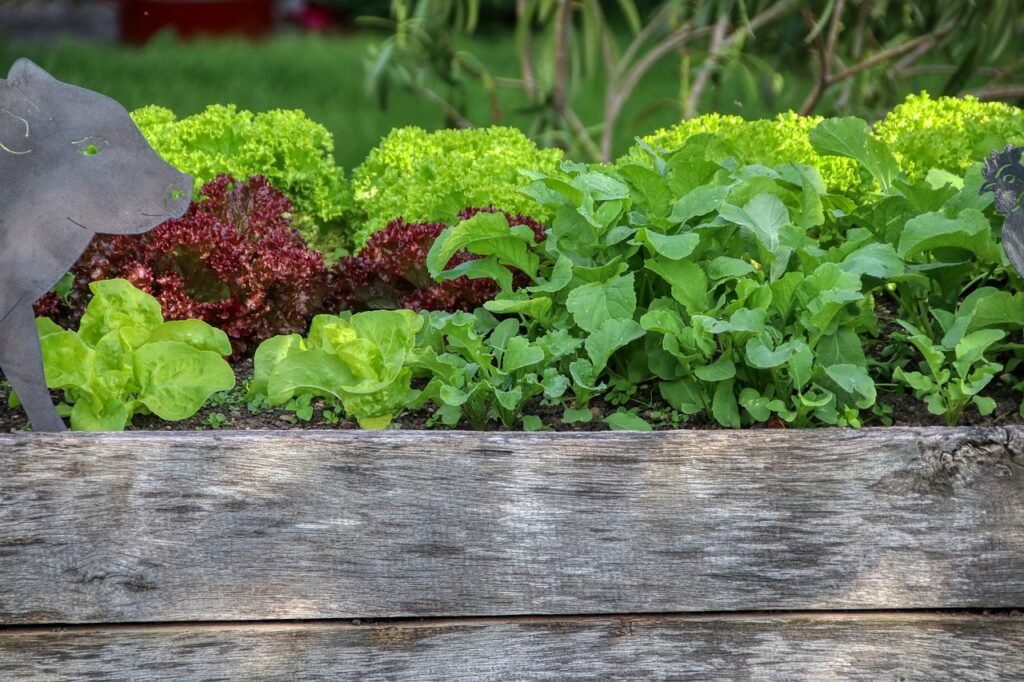
Old Tires
Discarded tires can be repurposed into unique and cheap raised beds. They’re durable, long-lasting, and provide great insulation for plants.
To use tires as raised beds, stack them on top of each other in layers, filling each tire with soil as you go. This method works particularly well for plants that require warmer soil temperatures.
Tires are toxic, so I don’t recommend using them for growing food. They’re great to use for flowers and other things you won’t be eating.
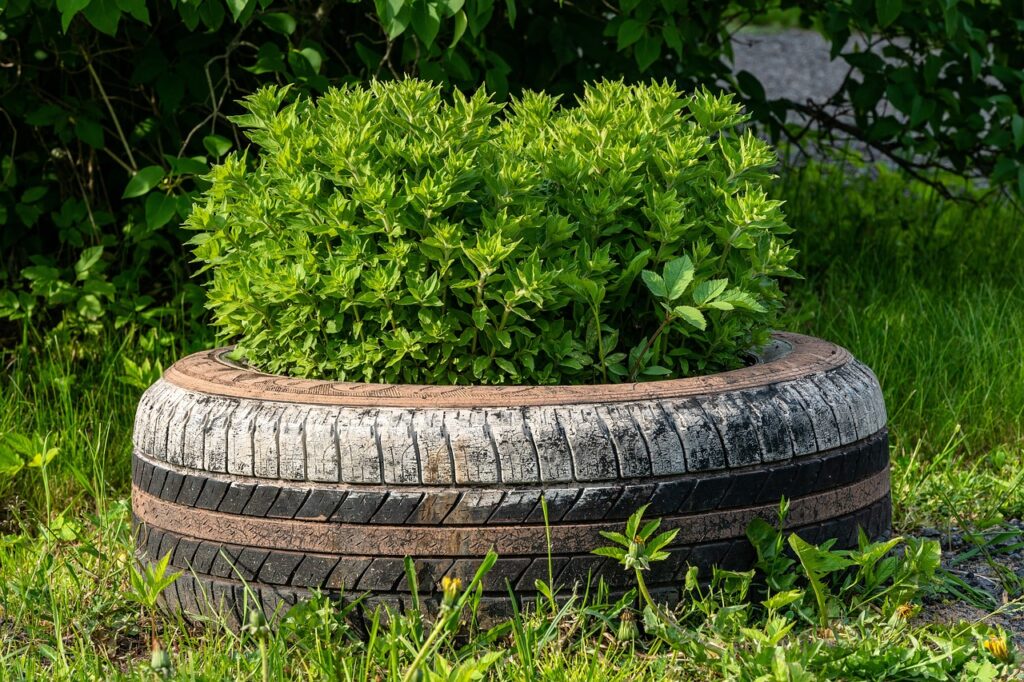
Straw Bales
Straw bales are a great option for creating cheap raised beds. They provide excellent aeration and drainage for plants while breaking down over time adding nutrients to the soil. Arrange the straw bales in the shape and size you want, add soil and compost to the center, and plant directly into the bales.
While straw bales great for cheap garden beds and that will decrease the weeds, you’ll also need to replace them year after year. They aren’t a permanent solution.
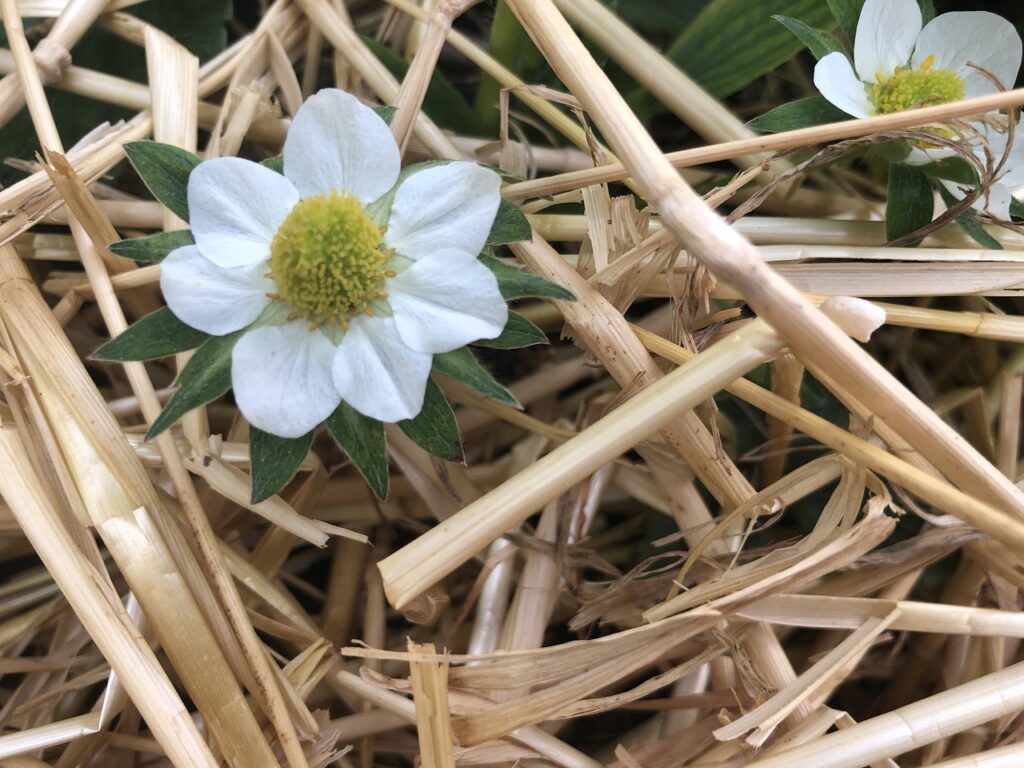
Recycled Containers
Look around your home for containers that can be repurposed into raised beds. Old bathtubs, troughs, wheelbarrows, and even plastic storage bins can make excellent planters. Just be sure to drill drainage holes in the bottom if they don’t already have them. These containers are not only budget-friendly but also add a unique look to your garden.
Again, be sure to check the containers for hazardous materials. You don’t want any toxic chemicals leaking into your garden soil.
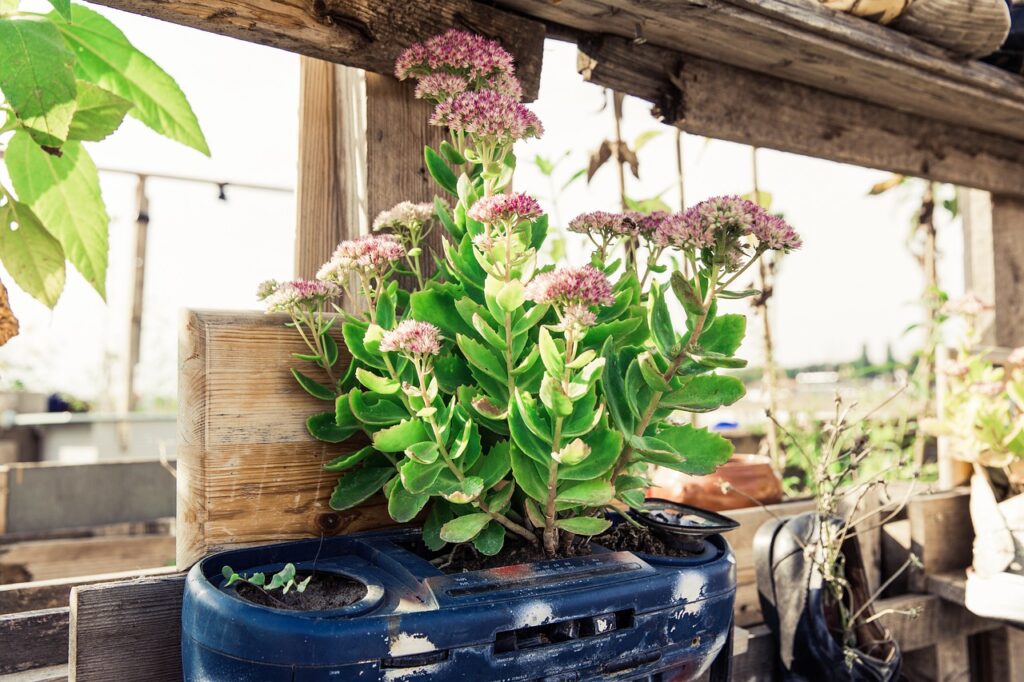
Natural Materials
Natural materials are my personal favorite way to build a garden bed. Get creative with the materials found in your surroundings. Rocks, bricks, and logs can be stacked to create rustic raised beds with plenty of character. You can also use fallen branches and sticks to construct raised bed frames which are beautiful!
Materials like cedar will also naturally last a long time without rotting. Try looking for natural materials like rocks and cedar that will last a while in your garden without needing to be replaced.
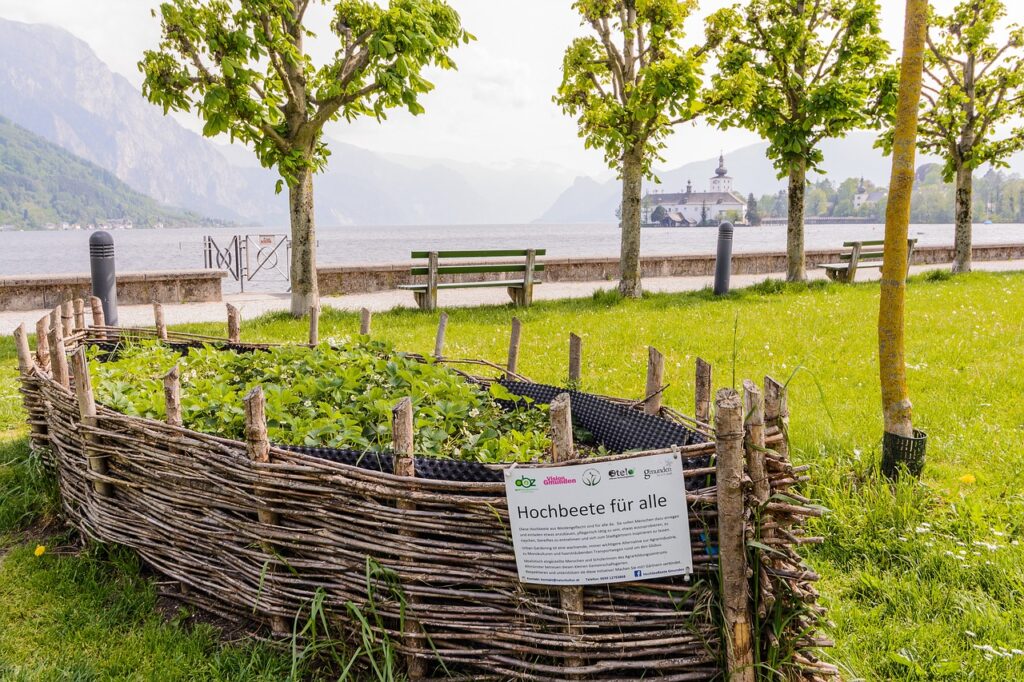
Upcycled Materials
Don’t underestimate the potential of upcycling materials for your raised beds. Old furniture, such as dressers or bookshelves, can be transformed into vertical gardens or tiered raised beds. Broken pieces of concrete or tiles can be used to edge raised beds, adding a touch of whimsical to your garden.

Building Materials
Cheap raised beds can be made from unused or recycled building materials. My raised beds were built from deck boards that were removed and replaced. You can also use cinder blocks, scrap wood, old doors, and windows. Look at online marketplaces for cheap or even free unused building materials. You can find a lot of unique items.
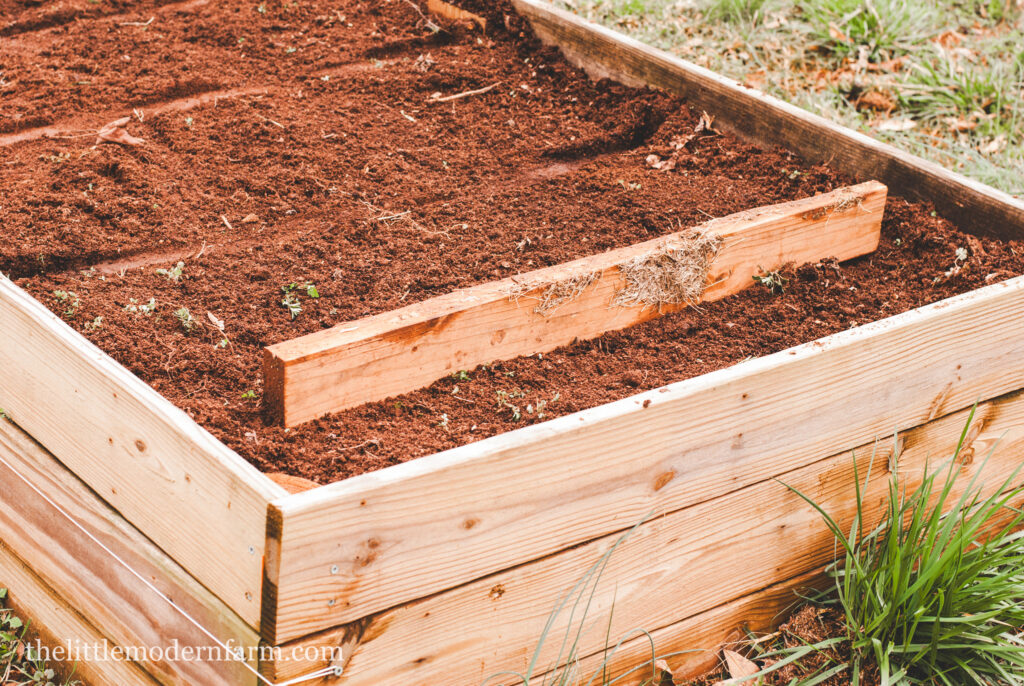
Helpful Tips
Choose the Right Location
Select a location for your raised bed that receives plenty of sunlight, typically 6-8 hours of direct sunlight per day. Also, make sure the area is easily accessible for watering, weeding, and harvesting.
Consider Raised Bed Size and Shape
Determine the size and shape of your raised bed based on your available space and gardening needs. Keep in mind that narrower beds (3-4 feet wide) are easier to reach into from the sides without stepping on the soil. I personally don’t build beds over 4 feet wide. This makes maintaining the bed a lot easier on my back.
Use Quality Soil Mix
Fill your raised bed with a high-quality soil mix that is well-draining, nutrient-rich, and right for the types of plants you want to grow. Consider mixing in compost to improve the soil’s fertility. I prefer to use a layer of cheap topsoil as a filler in my beds, then add a layer of ‘“garden soil”. I top it all off with a layer of compost. This is a great way to fill your beds inexpensively.
Ensure Proper Drainage
To prevent water-logging, make your raised bed have adequate drainage. Place drainage materials like gravel or rocks at the bottom of the bed. This will help the soil to not become waterlogged. If you’re using upcycled materials, make sure they have good drainage holes in the bottom of them.
Plan for Irrigation
Install a drip irrigation system or soaker hose to water your raised bed, and maintain consistent moisture levels throughout the soil. This is the most convenient method for maintaining your raised beds. You can also hand water with a watering can or hose nozzle works well for smaller gardens.
Practice Crop Rotation
Rotate crops every year to prevent soil depletion and decrease pest and disease buildup. Plan your planting layout with this in mind, grouping plants with similar nutrient and water requirements together.
Mulch and Weed Regularly
Apply a layer of organic mulch, like straw or wood chips, to retain soil moisture, suppress weeds, and regulate soil temperature. Stay on top of weed management to prevent competition for nutrients and space.
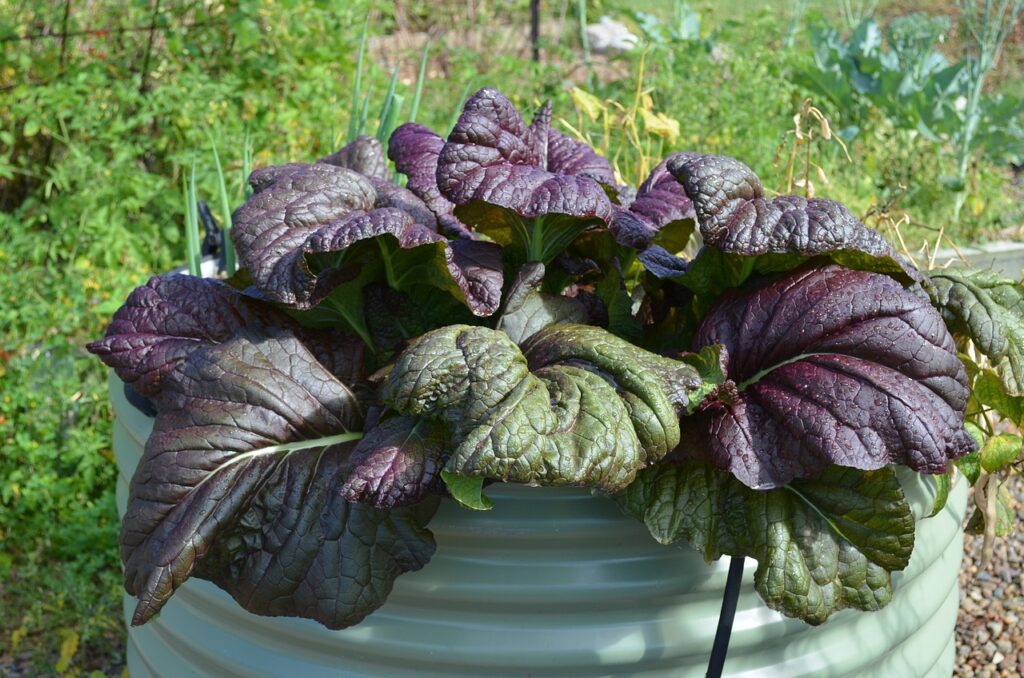
FAQS
What are the advantages of raised garden beds?
Raised garden beds have several advantages, such as improved soil quality, better drainage, reduced soil compaction, fewer weeds, and easier access for planting, watering, and harvesting. They also provide better control over soil conditions and can extend the growing season in cooler zones.
What materials can I use to build a raised garden bed?
Raised garden beds can be constructed from a variety of materials, including wood (such as cedar or redwood), composite lumber, concrete blocks, bricks, metal, recycled plastic, or even repurposed materials like old tires or pallets. Choose materials that are durable, non-toxic, and okay for outdoor use.
How deep should a raised garden bed be?
The depth of a raised garden bed depends on the types of plants you intend to grow. Generally, raised beds are between 6 to 12 inches deep for herbs, flowers, and shallow-rooted vegetables, while deeper beds of 12 to 24 inches are good for root vegetables and plants with deeper root systems.
Do raised garden beds require special soil?
While raised garden beds don’t necessarily need special soil, it’s essential to use a well-draining, nutrient-rich soil mix that is appropriate for the types of plants you plan to grow. You can consider mixing in compost or organic materials to improve soil fertility.
How do I prevent pests and diseases in raised garden beds?
To prevent pests and diseases in raised garden beds, practice good garden hygiene by regularly removing debris, weeds, and diseased plants. Companion plants will also attract beneficial insects and repel pests. Consider using organic pest control methods such as row covers, hand-picking, companion planting, and natural predators.
How often should I water my raised garden beds?
Watering raised garden beds depends on several factors such as soil type, weather conditions, plant species, and stage of growth. Generally, raised beds require watering more frequently than traditional garden beds due to their elevated position and increased drainage. Monitor soil moisture levels regularly and water deeply when the top inch of soil feels dry to the touch.
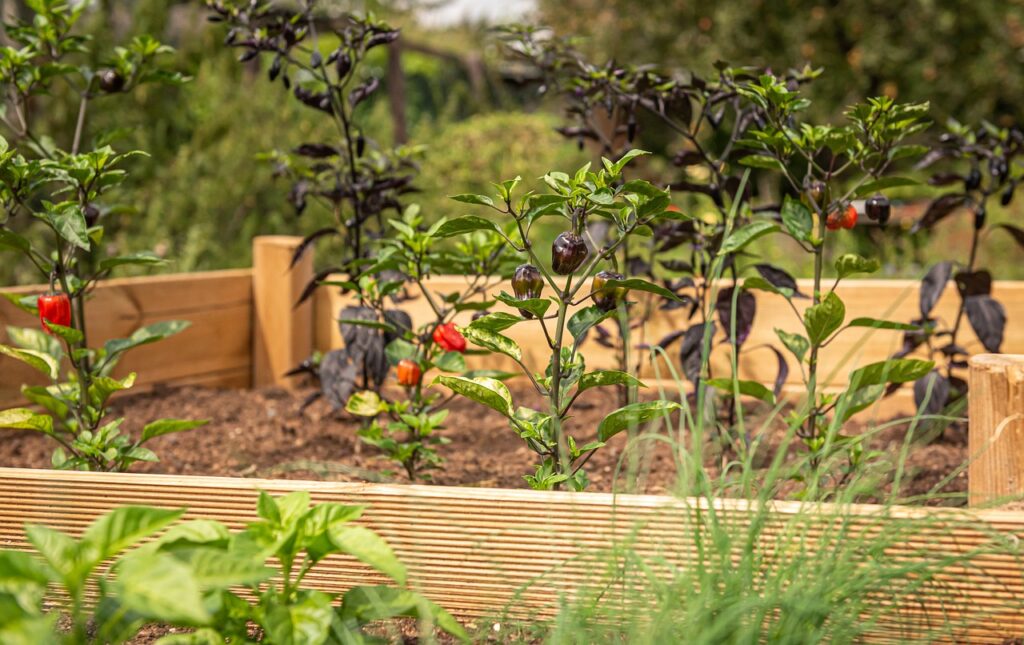
Final Thoughts
Gardening on a budget doesn’t mean sacrificing creativity. By repurposing recycled and natural materials found around your home, you can create beautiful raised beds that are both beautiful and cost-effective.
If you enjoyed this post, please share it! Thanks for visiting my farm.
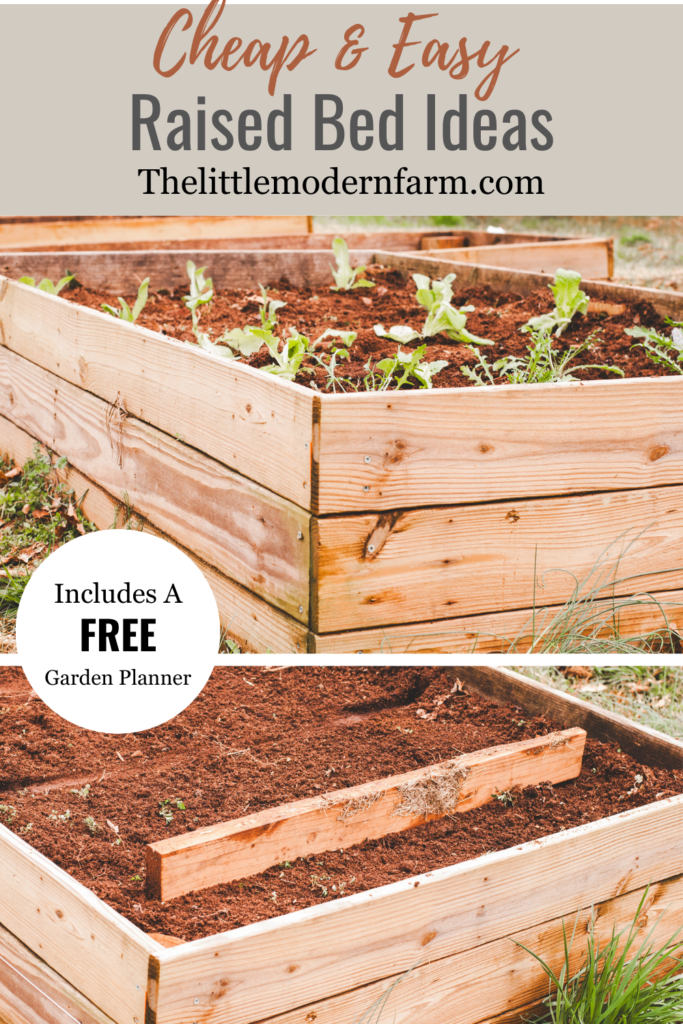
Leave a Reply